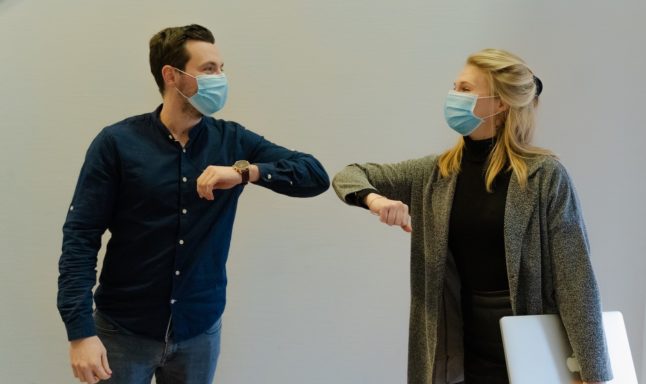In general, intensive care units (ICUs), where the most serious coronavirus cases are treated, have fewer beds than other hospital services, so they can become overcrowded quickly.
At the Centre Hospitalier du Valais Romand (CHVR) in Sion, 124 patients are hospitalised in the critical care unit and 10 in the ICU. The hospital is now at full capacity and can no longer take in Covid-related cases.
In fact, starting on October 26th, new patients will be sent to other hospitals in Valais and other cantons.
CHVR is also setting up a crisis unit to manage the overflow.
“The coming week will be very difficult. The increasing number of patients is constant and worrying”, hospital’s director Eric Bonvin told Radio Rhône on Sunday.
Though it only has 4 percent of Switzerland’s population, Valais’ Covid-19 cases account for over 16 percent of the country’s total number.
READ MORE: Covid-19: How Swiss hospitals are preparing for influx of new patients
Another medical facility, the Schwyz Hospital, is also saturated due to the high number of infections reported in the canton.
The original nine-bed ICU has been expanded to 24 beds to accommodate coronavirus patients and has now reached its limit, according to the hospital’s management.
While such situations are more likely to happen in smaller hospitals that don’t have extensive resources and capacities of large university hospitals, Geneva’s medical centre is also swamped.
The canton’s University Hospitals (HUG) currently care for 296 coronavirus patients — almost three times as many as 10 days ago.
“It is highly likely that the peak of 550 hospitalised Covid-positive patients that we recorded during the first wave will be greatly exceeded in the coming days”, said HUG director-general Bertrand Levrat.
On Sunday, HUG issued a call for medically trained volunteers and recently retired staff to help care for a record number of coronavirus patients expected in the coming days.
Face à l’augmentation rapide et continue du nombre d’hospitalisations de malades #Covid, les HUG recherchent du personnel volontaire médical, soignant et administratif pour renforcer et soulager leurs équipes. #CoronaInfoCH #HUGcovid19 https://t.co/J9JKNmxzPa pic.twitter.com/icRvONhZMp
— HUG (@Hopitaux_unige) October 25, 2020
Given the magnitude of the second wave, more Swiss hospitals will likely reach their full capacities very soon, according to Martin Ackermann, head of the Covid-19 Task Force.
He predicts that “intensive care beds will be saturated between November 5th and 18th”.
The situation seems to be more dire than it was in the spring.
During the peak of the pandemic in March and April, the Swiss health sector was not overwhelmed, having had sufficient resources to treat all patients needing coronavirus-related care.
Swiss hospitals even took in 30 coronavirus patients from France, especially from Franche-Comté and Grand Est regions, whose medical facilities were saturated.



 Please whitelist us to continue reading.
Please whitelist us to continue reading.
Member comments